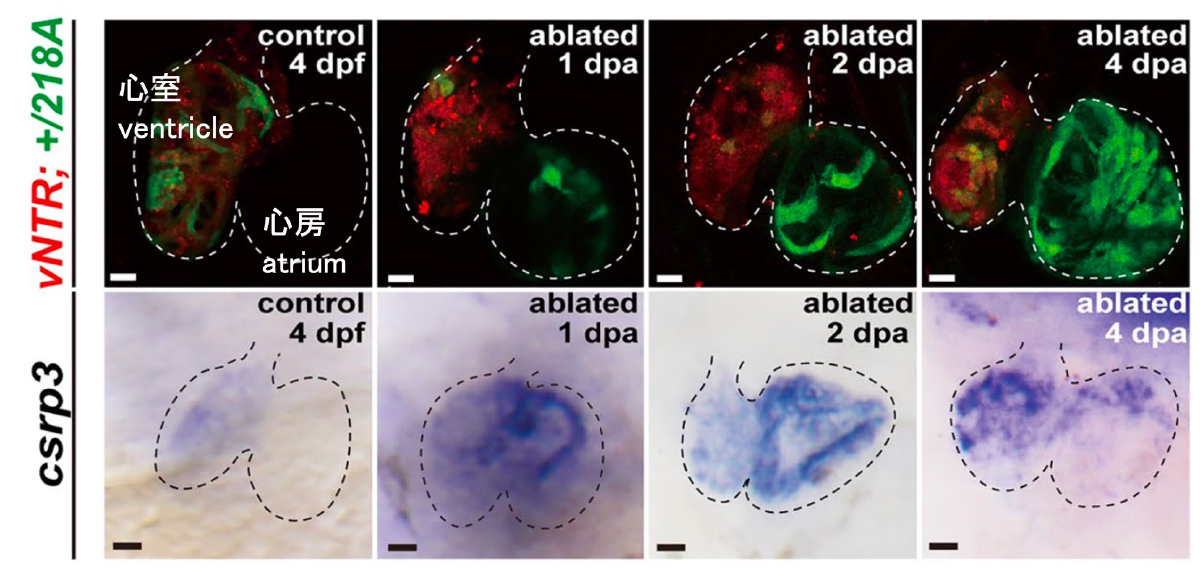A novel gene‐trap line reveals the dynamic patterns and essential roles of cysteine and glycine‐rich protein 3 in zebrafish heart development and regeneration
Kawakami Group / Laboratory of Molecular and Developmental Biology
A novel gene‐trap line reveals the dynamic patterns and essential roles of cysteine and glycine‐rich protein 3 in zebrafish heart development and regeneration.
Shuzhang Liang, Yating Zhou, Yue Chang, Jiayi Li, Min Zhang, Peng Gao, Qi Li, Hong Yu, Koichi Kawakami, Jinmin Ma, and Ruilin Zhang.
Cellular and Molecular Life Sciences (2024) 81, 158 DOI:10.1007/s00018-024-05189-
CSRP3/MLP, a key regulator of striated muscle function, have been linked to hypertrophic cardiomyopathy (HCM) and dilated cardiomyopathy (DCM) in patients. However, the roles of CSRP3 in heart development and regeneration are not completely understood. In this study, we characterized a novel zebrafish gene-trap line, gSAIzGFFM218A, which harbors an insertion in the csrp3 genomic locus. We discovered that csrp3 is specifically expressed in larval ventricular cardiomyocytes (CMs) and that csrp3 deficiency leads to excessive trabeculation, a common feature of CSRP3-related HCM and DCM. We further revealed that csrp3 expression increased in response to different cardiac injuries and was regulated by several signaling pathways vital for heart regeneration. Csrp3 deficiency impeded heart regeneration by impairing CM dedifferentiation, hindering sarcomere reassembly, and reducing CM proliferation while aggravating apoptosis. Csrp3 overexpression promoted CM proliferation after injury and ameliorated the impairment of ventricle regeneration caused by pharmacological inhibition of multiple signaling pathways. Our study highlights the critical role of Csrp3 in both heart development and regeneration, and provides a valuable animal model for further functional exploration that will shed light on the molecular pathogenesis of CSRP3-related human cardiac diseases.
This study was conducted as a collaborative research between the Zhang Lab at Wuhan University and the Kawakami Laboratory. This study was supported by NIG-JOINT (2015 Collaborative Research A1-8).

Figure: Induction of csrp3 gene expression in the atrium of the heart after ventricular cardiomyocyte ablation
(Red) Expression of mCherry-NTR in the ventricular cardiomyocytes. Cells were ablated by addition of MTZ.
(Green) Induction of csrp3 gene expression in the heart after ventricular cardiomyocyte ablation.















